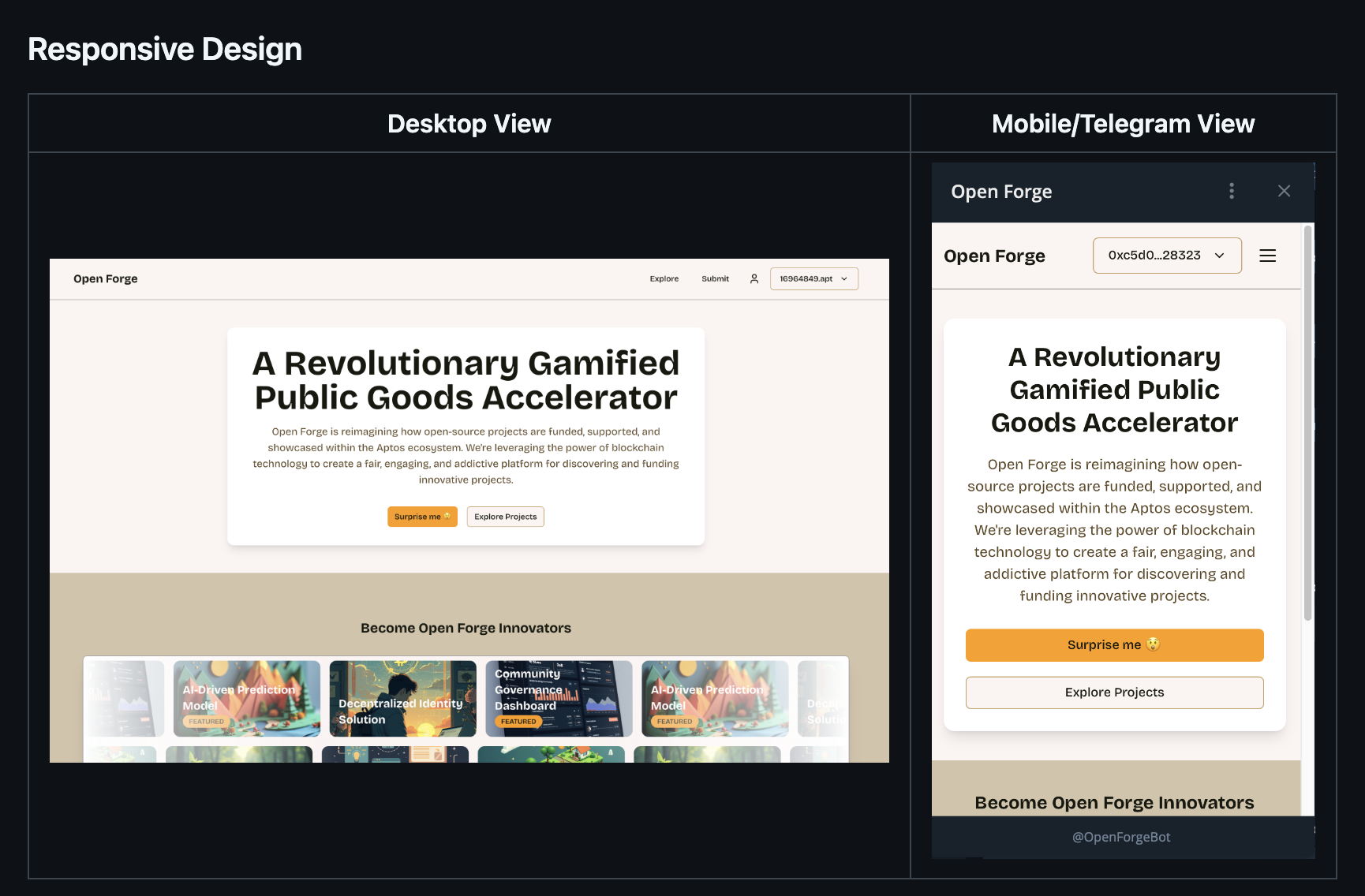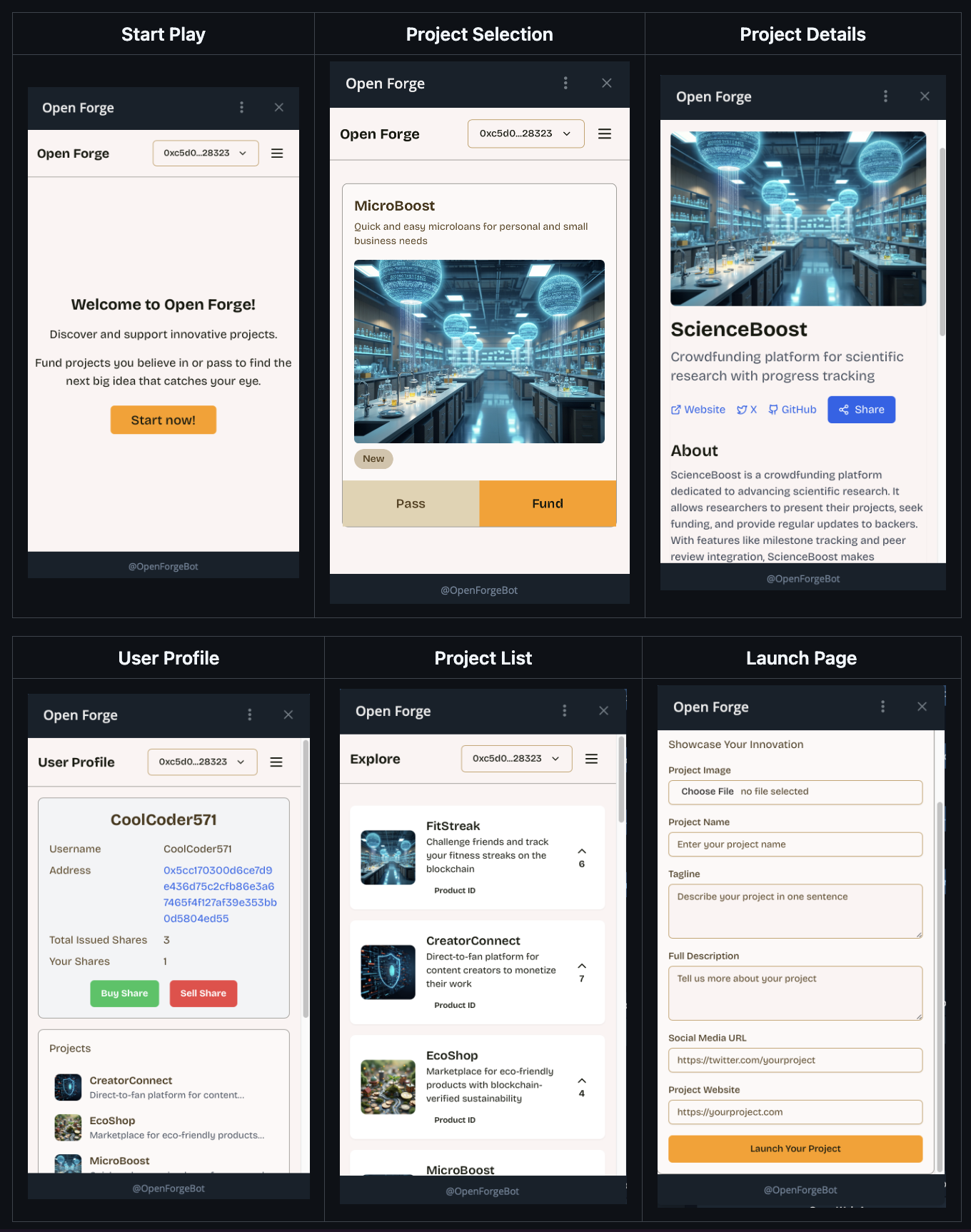Aptos Dapp Journey - Part 6
 John Fu Lin
John Fu LinFinally, I am concluding my journey with Aptos, which started by exploring the basics of blockchain and quickly moved through different development aspects. My series included setting up a development environment, creating smart contracts, and understanding the Move language. Each article I wrote built on the previous one, gradually introducing more complex ideas and practical uses. I covered frontend integration, digital asset standards, and the wide range of tools that support Aptos development. This series aimed to provide a comprehensive understanding of building decentralized applications on the Aptos blockchain, from basic concepts to advanced implementations
This final chapter serves as the culmination of the Aptos journey, focusing on a practical demonstration of the knowledge and skills acquired throughout the series. The article will present a detailed walkthrough of a decentralized application (dApp) built on Aptos. It will cover the development process. The discussion will include the challenges faced during development, the solutions implemented, and the lessons learned along the way. This chapter aims to provide a real-world example of how the concepts covered in previous articles come together in a functional dApp, offering insights and practical tips for aspiring Aptos developers.
What I have built
Throughout my journey in the blockchain space, I've witnessed the challenges faced by innovative projects struggling to gain visibility and funding. This realization, born from my experiences with Aptos, led me to create Open Forge, a platform designed to democratize project discovery and support in the blockchain ecosystem.
Open Forge is my response to three key challenges I identified:
Visibility: Many groundbreaking projects remain hidden, overshadowed by established ones with larger marketing budgets.
Funding Accessibility: Traditional funding mechanisms often favor projects with existing connections or traction, creating a paradoxical situation for newcomers.
User Experience: Complex interfaces and onboarding processes deter mainstream adoption of blockchain applications.
To address these issues, I've implemented the following key features in Open Forge:
Randomized Spotlight: I developed a random discover interface that gives every project an equal chance at visibility. This eliminates bias towards established projects and promotes fair discovery.
Bonding Curves for Funding: A dynamic funding mechanism that incentivizes early backers and allows projects to raise funds based on genuine interest. This smart approach to funding helps promising projects gain traction.
User-Friendly Interface: I designed an intuitive interface with multiple login options to simplify onboarding. This approach lowers the barriers to blockchain adoption and makes complex interactions more accessible to mainstream users.
Unique aspects
Open Forge stands out with its innovative approach to project discovery and funding. It uses a random spotlight system, giving every project a fair chance to get noticed. This levels the playing field, allowing new ideas to compete with established projects. The platform's random discover feature makes exploring projects as easy and engaging as using a social media app.
Funding on Open Forge is both exciting and strategic. It uses "bonding curves," which means early backers can potentially earn more. As more people support a project, its token price increases. This creates a sense of urgency and encourages people to back projects they believe in quickly.
The platform is designed with users in mind. Signing up is simple, with multiple login options, including email, social media accounts, or crypto wallets. This makes it easy for anyone to use, even if they're new to blockchain technology.
Development journey
The development of Open Forge spanned approximately six weeks, each phase bringing new challenges and insights. The journey began with intensive research and exploration of Aptos documentation, examples, and existing projects.
Key phases in the development timeline:
Week 1: Research and familiarization with Aptos ecosystem
Week 2-3: Smart contract development and initial testing
Week 4-5: Frontend development and integration
Week 6: Feature additions and refinement
The initial phase involved deep diving into Aptos documentation and experimenting with example projects. This hands-on approach proved crucial in understanding the nuances of the Aptos blockchain and its development environment.
Smart contract creation marked the beginning of actual development. The process involved several iterations as integration with the frontend revealed areas for improvement and necessary fixes. This iterative approach ensured the smart contract evolved to meet the project's needs effectively.
Challenges arose at various stages of development. The implementation of the randomized spotlight feature presented a unique hurdle. Due to security constraints, testing this feature in a separate test file proved impossible, as the smart contract file couldn't be imported into the test file. The solution involved refactoring the code and writing all tests within the smart contract file itself, ensuring comprehensive testing without compromising security.
The integration of product minting was a necessary step but also added complexity to the development process.
A major challenge arose with the Irys browser SDK. Even though we followed the documentation exactly, the SDK did not work on the Aptos testnet. Interestingly, it seemed to work on the Aptos mainnet, underscoring the importance of thorough testing across different network environments.
Another hurdle involved displaying minted NFT data immediately after minting. The solution came in the form of a hosted indexer API with Hasura playground, enabling real-time data retrieval and display.
The development journey revealed that understanding smart contract logic on Aptos is more intuitive for developers with Rust experience or those coming from the Solana ecosystem. The contrast with Solidity-based smart contracts was notable, emphasizing the unique characteristics of Move, Aptos' smart contract language.
Integration with the Aptos ecosystem
Integrating with the Aptos ecosystem involved leveraging several Aptos-specific features and tools. This integration process highlighted the unique capabilities of the Aptos blockchain and its surrounding infrastructure.
The interaction with the Aptos blockchain and smart contracts forms the backbone. The platform utilizes Move, Aptos' native smart contract language, to implement core functionalities. Move's resource-oriented programming model proved particularly useful in managing digital assets and implementing complex logic for the bonding curve mechanism.
Key Aptos-specific integrations include:
Keyless Authentication: Open Forge implements a keyless authentication system, eliminating the need for users to sign approval transactions for every interaction. This feature significantly enhances user experience by reducing friction in the login process. Users can access the platform through social login options without the constant need for transaction approvals, making the experience more seamless for blockchain newcomers.
Mizu Wallet Integration: This Telegram-based wallet allows users to interact with the platform directly through the messaging app. The integration expands accessibility, enabling users to manage their assets and participate in project funding without leaving their familiar Telegram environment.
Smart Contract Randomness: Implementing true randomness in smart contracts presents a challenge in many blockchain ecosystems. However, Aptos provides native support for secure randomness generation. The app leverages this feature to ensure fair and unpredictable project spotlighting, enhancing the platform's commitment to equal visibility for all projects.
Surf for Type-Safe Smart Contract Calls: The development process benefited significantly from the use of Surf, a TypeScript library for type-safe interactions with Aptos smart contracts. Surf eliminated common errors related to function names, arguments, and return values, streamlining the development process and enhancing code reliability. The static type inference from ABIs provided by Surf proved invaluable in catching potential issues early in the development cycle.
Indexer API Integration: To address the challenge of displaying real-time data, particularly for newly minted NFTs, Open Forge integrates with Aptos' Indexer API. Utilizing the hosted indexer API with Hasura playground allows for efficient querying and display of on-chain data. This integration enables the platform to provide users with up-to-date information on project status, funding progress, and NFT ownership.
The integration process revealed the robustness and developer-friendly nature of the Aptos ecosystem. Features like native randomness generation and the availability of tools like Surf demonstrate Aptos' commitment to simplifying blockchain development. The keyless authentication and Mizu Wallet integration showcase the ecosystem's focus on improving user experience and accessibility.
Challenges encountered during integration, such as the initial difficulties with the Irys browser SDK on the testnet, highlighted the importance of thorough testing across different network environments. These experiences contributed valuable insights to the broader Aptos developer community.
User experience and onboarding
I focused on user experience, aiming to make blockchain interactions smooth for both experienced crypto users and newcomers. The platform's design is centered around creating an intuitive, app-like interface that feels familiar and easy to use.
Key aspects of the user experience include:
Simplified Authentication:
Multiple login options, including email, social media, and crypto wallets
Keyless authentication for reduced friction in daily use
Available as Telegram Mini App
Responsive Design:
Consistent experience across desktop, mobile, and Telegram interfaces
Adaptive layouts that maintain functionality on different screen sizes
User Interface Showcase
Open Forge's user interface combines aesthetic appeal with functional design, ensuring a pleasant and efficient user experience across all devices.
Responsive Design

The platform's responsive design adapts seamlessly to various screen sizes:
Desktop: Full-featured interface with expanded views and detailed information
Mobile: Streamlined design focusing on core functionalities, optimized for touch interactions
Telegram: Integrated interface within the Telegram app, leveraging native app features
Feature highlights

Future developments
While Open Forge has made significant strides, its journey is far from over. Here are some potential directions Open Forge might take:
Integrating a launchpad
Dedicated launchpad for promising projects. If implemented, this launchpad could:
Potentially provide a curated space for high-potential Aptos projects to gain visibility
Possibly offer additional support and resources to selected projects
Likely implement a vetting process to ensure quality and legitimacy
Potentially create exclusive backing opportunities for app users
Decentralized grant program
Establishing a decentralized grant program to foster innovation. This program might include:
Community-driven selection of grant recipients
A focus on projects that could enhance the Aptos infrastructure or build critical DApps
Transparent fund allocation and progress tracking mechanisms
Potential mentorship opportunities from established Aptos developers
AI-Powered recommendation engine
To improve project discovery and user engagement, an AI-powered recommendation engine can be implemented:
Personalized project recommendations based on user behavior and preferences
Predictive analytics for project success likelihood
AI-assisted due diligence for project vetting
Smart matching between projects and potential backers based on interests and investment history
Personal reflections and learnings
Developing the project on the Aptos blockchain has been an eye-opening journey, full of challenges, discoveries, and significant personal growth. This experience has offered valuable insights into blockchain development and the unique features of the Aptos ecosystem.
Key takeaways
Move Language Proficiency: Mastering Move, Aptos' smart contract language, proved to be a rewarding challenge. Its resource-oriented paradigm and emphasis on safety forced a rethinking of smart contract design. The learning curve was steep but ultimately led to writing more secure and efficient code.
Ecosystem Maturity: Aptos impressed with its robust tooling and documentation. The availability of resources like the Aptos CLI, Move Prover, and Surf library significantly streamlined the development process. However, occasional inconsistencies in documentation highlighted the evolving nature of the ecosystem.
Performance and Scalability: Aptos' high throughput and low latency became evident during development. Implementing features like randomized project spotlighting and real-time updates was smoother than anticipated, thanks to the blockchain's performance capabilities.
Community Support: The Aptos developer community, though smaller than some established blockchains, proved to be highly engaged and supportive. Forums and Discord channels were invaluable for problem-solving and knowledge sharing.
Comparison with other blockchains
Having previously worked with Ethereum and Solana, developing on Aptos offered a fresh perspective:
Smart Contract Development:
Compared to Solidity (Ethereum), Move offers better safety guarantees and a more intuitive resource management system.
The development experience felt more streamlined than Solana, with fewer low-level optimizations required for performance.
Transaction Speed and Costs:
Aptos' high throughput and low fees were a significant advantage over Ethereum, especially for a platform requiring frequent user interactions.
While comparable to Solana in speed, Aptos' deterministic finality provided more predictable transaction behavior.
Developer Tools:
Aptos' tooling, while comprehensive, felt less mature compared to Ethereum's extensive ecosystem.
However, tools like Surf for type-safe contract interactions surpassed similar offerings in other ecosystems.
Skills acquired and personal growth
Advanced Move Programming: Developed a deep understanding of Move's resource-oriented programming model and security features.
Blockchain Architecture Design: Gained expertise in designing scalable and efficient blockchain applications, considering factors like state management and gas optimization.
Full-Stack Blockchain Development: Enhanced skills in integrating blockchain backends with responsive front-end applications, particularly in handling real-time data updates.
Problem-Solving and Adaptability: The rapidly evolving nature of Aptos required quick adaptation to changes and creative problem-solving, especially when dealing with new or sparsely documented features.
Community Engagement: Improved ability to engage with developer communities, contribute to discussions, and leverage collective knowledge for problem-solving.
Cross-Chain Perspective: Developed a broader understanding of blockchain ecosystems, enabling better decision-making in choosing the right blockchain for specific use cases.
Building Open Forge on Aptos has been a transformative experience. It not only enhanced technical skills but also provided valuable insights into the future of blockchain development. The journey reinforced the importance of continuous learning and adaptability in the fast-paced world of blockchain technology. As Aptos continues to evolve, the skills and knowledge gained from this project will undoubtedly prove invaluable in future blockchain endeavors.
The demo
The project helps people find and fund cool projects. Here is the quick walkthrough of the demo.
You can log in using different methods, like your wallet or even Telegram. It works on computers and phones.
To find projects, you just click a button. The website shows you a random project, giving every idea a fair chance. If you like a project, you can fund it with one click. If you don't like it, you can skip to the next one.
You can learn more about projects by clicking on their pictures. You'll see links to their social media and more info. You can also vote for projects you like.
You can look at the profiles of people who create projects. You can buy parts of their projects or see their other ideas.
If you have your own idea, you can easily add it to the Dapp. Just fill out a form, and your project will show up in the project list.
Here you can find the source code: https://github.com/aeither/open-forge
Conclusion
As this journey through the development of Open Forge on Aptos comes to a close, it's time to reflect on the broader implications of this project and its place within the Aptos ecosystem.
The Aptos blockchain has proven to be a robust and developer-friendly platform, offering unique features that enable the creation of innovative decentralized applications. Its focus on security, scalability, and user experience aligns perfectly with the vision behind Open Forge. The Move language, while presenting a learning curve, offers a powerful toolset for building secure and efficient smart contracts.
Open Forge's role in the Aptos ecosystem extends beyond being just another dApp. It aims to be a catalyst for innovation, providing a fair and engaging platform for projects to gain visibility and funding. By leveraging Aptos' unique features like native randomness and fast transaction processing, Open Forge showcases the potential of what can be built on this blockchain.
The development process has highlighted both the strengths and areas for growth within the Aptos ecosystem. The availability of tools like Surf for type-safe contract interactions and the robust Aptos CLI significantly eased the development process. However, the journey also revealed areas where the ecosystem could further mature, particularly in terms of a wider range of development tools and ecosystem dapps.
As Open Forge moves forward, it carries the potential to play a significant role in shaping the Aptos ecosystem. By fostering a community of innovators and providing them with the tools to succeed, Open Forge can contribute to the growth and diversification of projects built on Aptos.
I extend my heartfelt gratitude to the readers who have followed this development journey. Your interest are what make this journey meaningful. Special thanks go to the Aptos community - the developers, enthusiasts, and visionaries who have created and nurtured this ecosystem. Your support, knowledge sharing, and collaborative spirit have been invaluable throughout this process.
Looking to the future, the potential for blockchain-based platforms is immense. As blockchain technology continues to evolve and gain mainstream adoption, platforms that prioritize user experience, fairness, and innovation will play a crucial role in shaping the digital landscape.
The development of journey has been more than just a technical project. It's been a step towards realizing the potential of blockchain technology to create fairer, more transparent, and more engaging digital experiences. As we stand on the brink of a new era in decentralized applications, I am filled with excitement for what the future holds.
Thank you for being part of this journey. Here's to the future of Aptos and the transformative power of blockchain technology. The best is yet to come!
Subscribe to my newsletter
Read articles from John Fu Lin directly inside your inbox. Subscribe to the newsletter, and don't miss out.
Written by

John Fu Lin
John Fu Lin
Follow your curiosity.